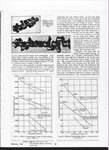jerryw
Airman 1st Class
Has anyone got a manual or instruction book that covers one of the late-model Allison V-1710 engines which were fitted with 12 counterweight crankshafts?
This type of crankshaft gets a lot of mention in the Dan Whitney book on the Allison V-12 but there are no photos or drawings of the component.
Apparently, each crankcheek of the shaft has an individual counterweight cast integral with the whole shaft. The counterweights are somewhat odd shaped to provide maximum effect and weight saving.
Any postings of illustrations of the 12-cwt crank would be much appreciated.
This type of crankshaft gets a lot of mention in the Dan Whitney book on the Allison V-12 but there are no photos or drawings of the component.
Apparently, each crankcheek of the shaft has an individual counterweight cast integral with the whole shaft. The counterweights are somewhat odd shaped to provide maximum effect and weight saving.
Any postings of illustrations of the 12-cwt crank would be much appreciated.

